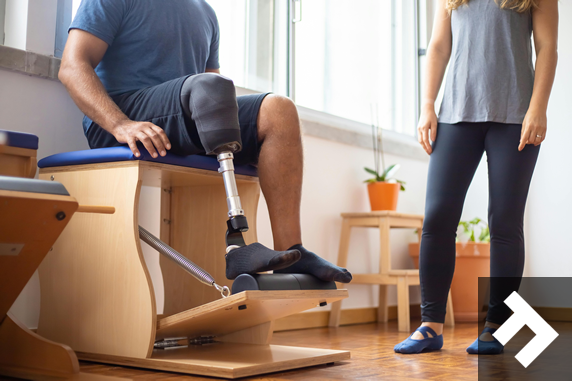Spinal injuries can be life-altering, impacting not just physical health but also emotional and mental well-being. Physical therapy plays a crucial role in the recovery process, leveraging various techniques to enhance mobility, strength, and overall quality of life.
Whether you are recovering from a minor spinal strain or a more severe injury, understanding the role of physical therapy can help you make informed decisions about your health. To ensure you have the right the support during this time it’s important to understand how spinal injury claims work in order to be financially supported too.
Understanding Spinal Injuries
Spinal injuries can range from temporary discomfort to permanent disability. The spine is divided into different sections: cervical, thoracic, lumbar, and sacral. Injuries can affect any part of the spine, leading to varying degrees of impairment.
Types of Spinal Injuries
Common types of spinal injuries include:
- Cervical Injuries: These affect the neck area and can result in partial or complete loss of sensory and motor function in all limbs
- Thoracic Injuries: These impact the upper and mid-back, often leading to paraplegia
- Lumbar and Sacral Injuries: These affect the lower back and can impact the hips, legs, and groin area
Symptoms of Spinal Injuries
The symptoms of spinal injuries vary based on the location and severity of the injury. Common symptoms include:
- Severe back pain or pressure in the neck, head, or back
- Weakness, incoordination, or paralysis in any part of the body
- Numbness, tingling, or loss of sensation in the hands, fingers, feet, or toes
- Loss of bladder or bowel control
- Difficulty with balance and walking
The Importance of Physical Therapy
Physical therapy is an indispensable part of the rehabilitation process for spinal injury patients. It employs a range of techniques to enhance recovery and improve functionality.
Benefits of Physical Therapy
Engaging in regular physical therapy sessions can offer numerous benefits, including:
- Improved Mobility: Physical therapy exercises help maintain and improve the range of motion in joints and muscles
- Strength Enhancement: Specific exercises are designed to strengthen the muscles surrounding the spine, offering better support and reducing pain
- Pain Management: Techniques such as manual therapy, heat, and cold treatment can alleviate pain and discomfort
- Prevention of Secondary Complications: Regular physical activity can prevent complications such as pressure sores and muscle atrophy
Exercises and Techniques
A comprehensive physical therapy programme for spinal injury recovery will include various exercises and techniques tailored to the individual’s specific needs. Some commonly used methods are:
- Passive Range of Motion (PROM): These exercises are performed by the therapist to help maintain joint flexibility
- Active Range of Motion (AROM): These exercises are performed by the patient to improve strength and movement
- Strength Training: Utilising weights and resistance bands to build muscle strength
- Hydrotherapy: Water-based exercises that reduce stress on the spine while promoting movement
The Role of a Physical Therapist
A physical therapist is an essential part of the recovery team for someone with a spinal injury. They work closely with patients to develop a personalised rehabilitation plan tailored to their unique needs and goals. This plan can include a variety of therapeutic exercises, manual therapy techniques, and other interventions to optimise recovery.

One of the primary goals of a physical therapist is to help patients regain as much function as possible. They also provide education on how to manage symptoms and prevent further injury. This may include training on the proper use of assistive devices, such as braces or wheelchairs, and teaching techniques for safe movement and body mechanics.
Research and Evidence
Evidence-based practice is crucial in physical therapy to ensure that the techniques employed are effective and beneficial for the patient. Research indicates that early intervention and a structured rehabilitation programme significantly improve outcomes for individuals with spinal injuries.
Studies have shown that physical therapy can enhance neural recovery and functional outcomes. For instance, a study published in the Journal of NeuroEngineering and Rehabilitation highlights the positive impact of activity-based rehabilitation in enhancing motor recovery after spinal cord injury.
Further evidence suggests that tailored exercise programmes can reduce secondary complications and improve the overall quality of life for patients.
Challenges and Considerations
While physical therapy offers numerous benefits, it is essential to acknowledge the challenges that come with spinal injury rehabilitation. Patients may experience fluctuations in their progress, and setbacks are not uncommon. Patience and perseverance are crucial, both for the patient and the therapist.
Moreover, the psychological impact of a spinal injury can be significant. Depression, anxiety, and other mental health issues are common among spinal injury patients. Therefore, a holistic approach that addresses both physical and emotional well-being is vital. Incorporating mental health support into the rehabilitation programme can facilitate a more comprehensive recovery.

The role of physical therapy in spinal injuries…
Physical therapy is a cornerstone of spinal injury recovery, offering numerous benefits that extend far beyond the immediate physical improvements. With the help of skilled physical therapists, patients can regain mobility, strength, and independence, significantly enhancing their quality of life.
Recovering from a spinal injury is a journey that requires dedication, support, and the right therapeutic interventions. By understanding the vital role of physical therapy, patients and their families can better navigate the challenges of recovery and work towards achieving their rehabilitation goals.
![]()
 Instagram
Instagram Pinterest
Pinterest Facebook
Facebook Twitter
Twitter YouTube
YouTube




 Paul
Paul 




